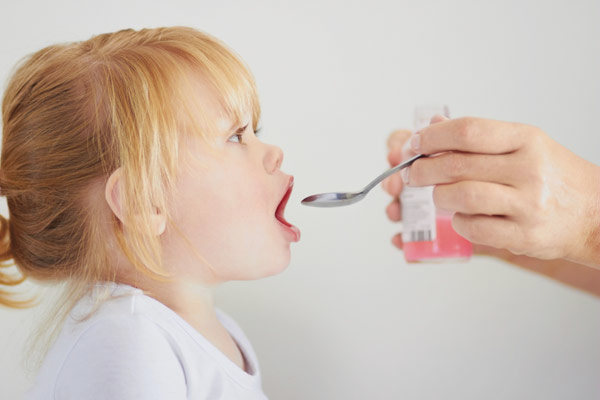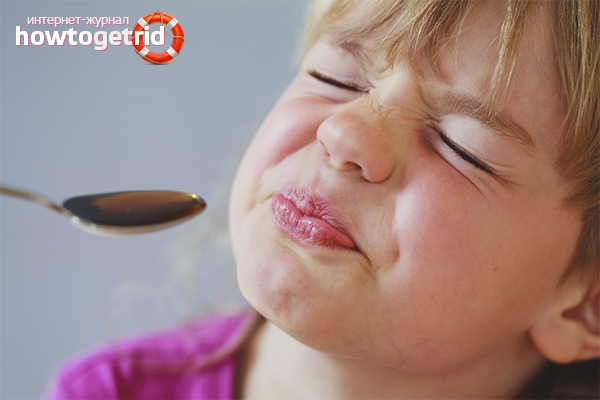The content of the article
Modern children are sick more often - all doctors without exception speak about it. Whether the ecology makes itself felt, or the children become more vulnerable, and maybe a mutation of viruses causes us to get sick several times a year. And every, even the most insignificant disease, is accompanied by medication. Often, children refuse to drink pills and syrups. Parents have to use a lot of tricks to get the child to drink the coveted liquid.
Preparation for taking medication
Before you give your child a medicine, you need to know a few nuances.
- To begin, ask your doctor about the real need for taking this or that medication. But the child should not hear this, so that he would not be overwhelmed with doubts - in this case, he will completely refuse to take the medicine.At the reception, ask about the analogues of the drug in case you can not find the drug in the pharmacy.
- Having bought the right medicine, bring it home, and carefully study the instructions for use. Read the dosage of the drug, possible adverse reactions.
- Depending on the action, some medications can be taken before meals (probiotics), others during meals (enzymes), and still others only after a meal (antibiotics). Try to follow these rules - the safety of taking the drug, as well as its effectiveness, depends on it.
- Do not forget to pay attention to the storage conditions of the drug. Some medicines (for example, the same probiotics) can only be stored in the refrigerator, live bacteria will die in heat, and the medicine will become useless.
- Distribute the medication so that between them was the same time. This is especially true of antibiotics and hormonal drugs. This provides an average therapeutic dose of medication throughout the day. If you are prescribed to drink the remedy three times a day, it is better to drink it at 6 am, at 2 pm and 10 pm, that is, every 8 hours.
- If a child needs to take several drugs, do not give them one by one. Between the intake of one and the second medication it is necessary to sustain an interval of at least half an hour.
- It is better to drink medicines with plain water. Juice, tea, compote can affect the composition of the medicine and worsen the quality of its absorption into the walls of the stomach. In addition, it can cause an allergic reaction.
These simple rules will help you be fully prepared before taking the medicine.
How to give a child medicine
In taking medication is very important dosage form. Pharmacological companies make sure that the baby is simple and easy to take one or another drug, so most medicines for babies are released in the form of syrup. Often he has a pleasant taste, color and smell that attracts the child and makes him drink the contents of a spoon without special whims.
If the prescribed medicine is in the form of a pill or capsule, you need to look at the age of the child. Usually tablets can swallow kids who are more than 4-5 years old. Babies need to grind a pill. Make it very easy.The desired dose (whole tablet, half or quarter) is placed in a teaspoon, and the convex part of the second spoon is thoroughly crushed. After that, you can add a little water to the powder and stir it right there in the spoon. Then give a crumb to drink this composition and be sure to offer a drink with water. This will help get rid of the unpleasant bitter taste.
The capsule needs to be opened, divide the contents into the required number of parts and also dissolve in water. The drug can be dissolved in a small amount of milk or mixture. However, remember that it is necessary to dissolve the drug in a small amount of liquid, so that the baby must have drunk everything.
If the child is very small, and can not drink medicine with a spoon, type the required amount of the drug in a syringe without a needle. Gently, without a sharp pressure, enter the medicine in the mouth, from the side of the cheek. It is very convenient to use special nipples, dispensers, the child will suck the right amount of the drug without special manipulations.
What to do if the child does not want to drink the medicine
It is much easier to give medicine to the baby, because the little crumb does not resist.But after a year, the baby understands everything, it is difficult to make him do what he does not want.
To give the baby medicine, sit him on his lap. With one hand hold his chest, and the second offer a spoon with the right medication. If the baby refuses to open his mouth, gently push his chin or gently press the wings of the nose.
Do not give medicine to a child by force - he may spit it out or it may be torn out. Try to present the process in the form of a game. Give medicine first to dolls, bears and bunnies, and only then to your baby. You can tell the little one about the evil microbes that make his throat ache. Do not forget to mention the good wizard Syrup, who will cope with evil microbes and the neck will no longer hurt. Turn on the fantasy - only you can find an approach to your own child.
What to do if the child has vomited
Vomiting is a common occurrence for a child unwilling to drink medicine. If the baby is vomited in the first 10 minutes after taking the drug, the drug is almost certainly not ingested, so you need to repeat the dose. But just not if you give heart medicine or hormones - their overdose is very dangerous.Vomiting after half an hour after taking the medicine is not terrible - during this time the drug is completely absorbed. If vomiting is constantly repeated after taking the medication - pay attention to the attending physician. Perhaps this is a side effect of taking the medication itself.
How to insert a child candle
To put a child a candle, the baby must be put on the back and raise his legs. Children older than two years old, the candle is introduced in the supine position on the left side. Pre-remove the candle from the refrigerator and let it warm at room temperature. Open the candle packaging and grease it with a little Vaseline. Spread the child's buttocks and gently insert a candle in the anus. Squeeze the berries so that the crumb does not push out the candle. The medicine will begin to act within 10-15 minutes. Do not use adult candles to treat children - their size is much larger.If there are no children's candles on hand, divide the suppository into several parts along the length.
Taking medicines is a common procedure, but not for children. Unpleasant taste, unusual shape and color, anxiety of the mother - all this can alert the child, and he easily refuses to drink medicine. Find the approach to your child, because only you know in which case the baby will certainly open his mouth and be sure to drink the coveted syrup.
Video: how to give medicine to children












To send